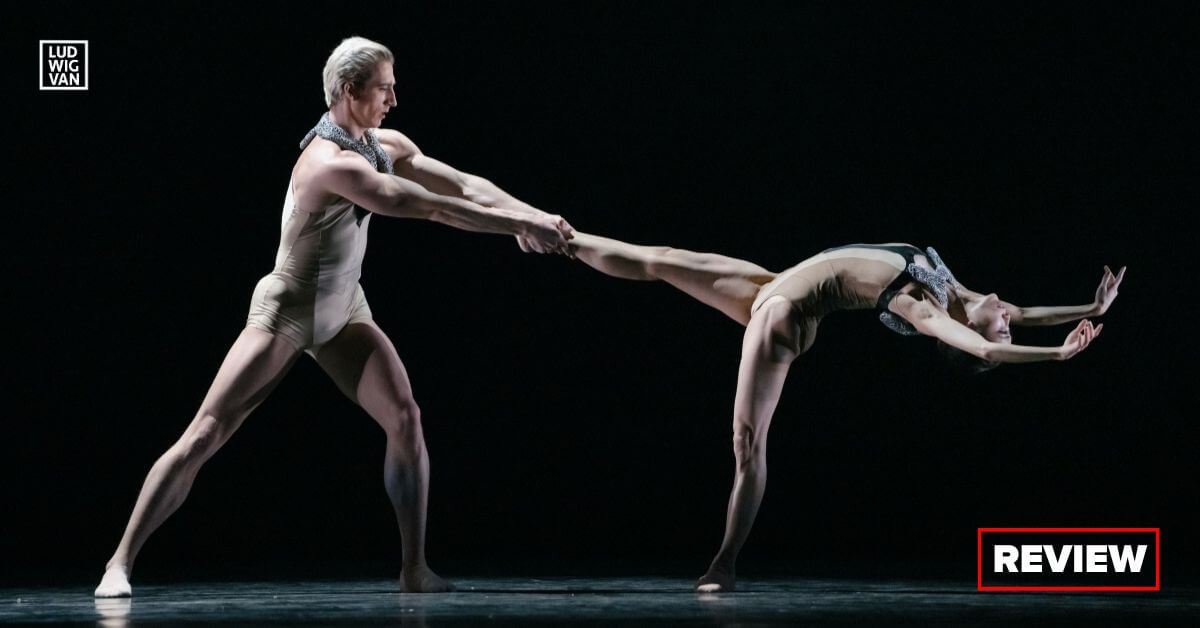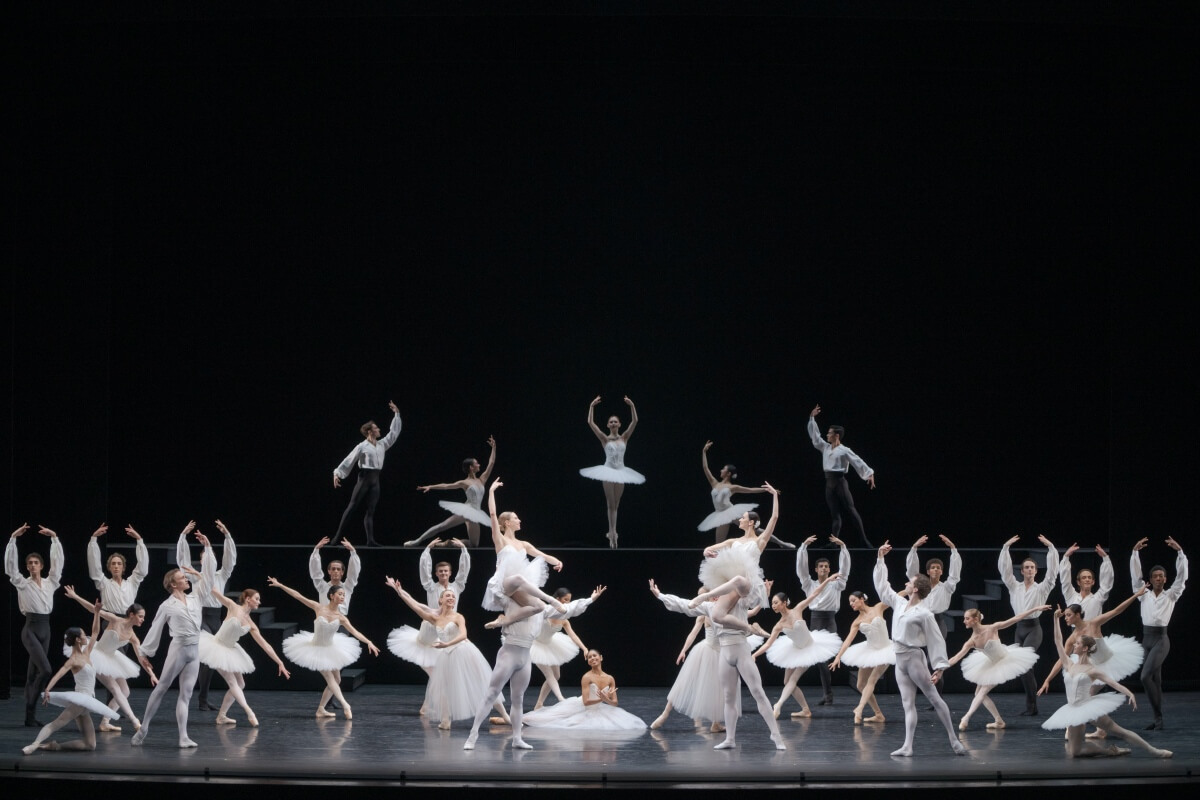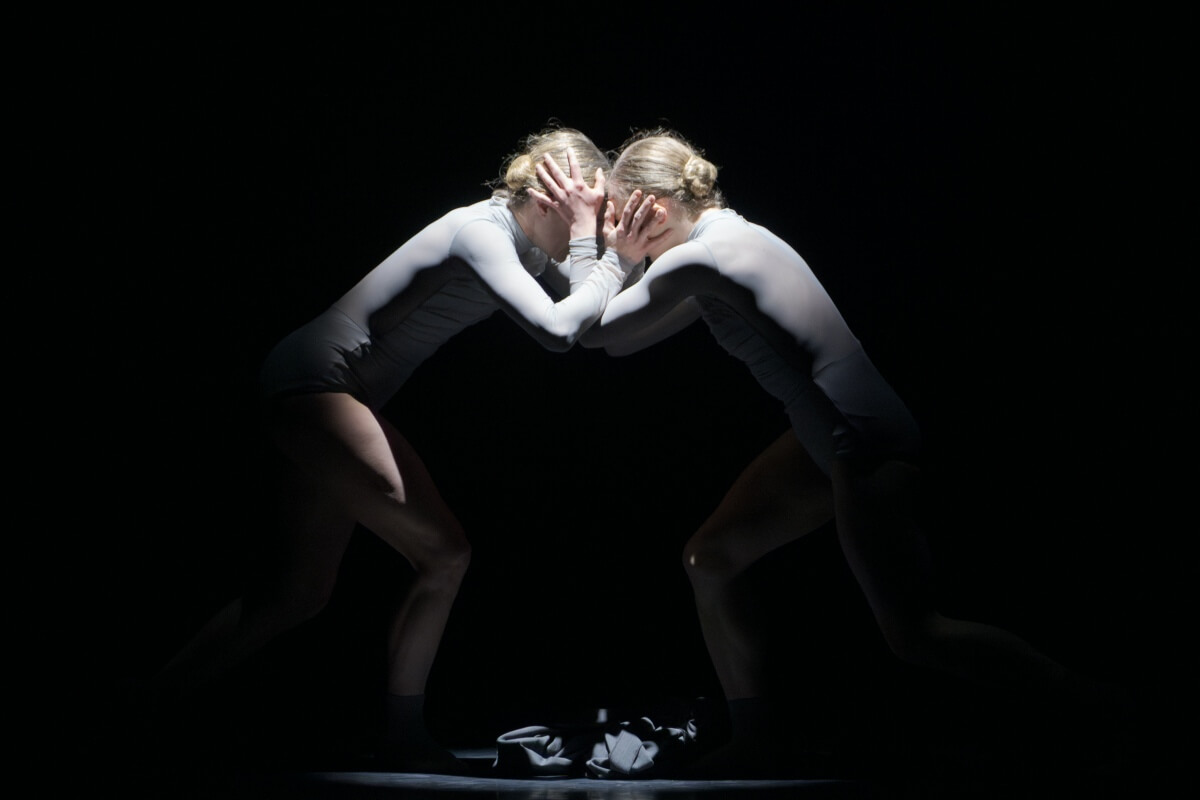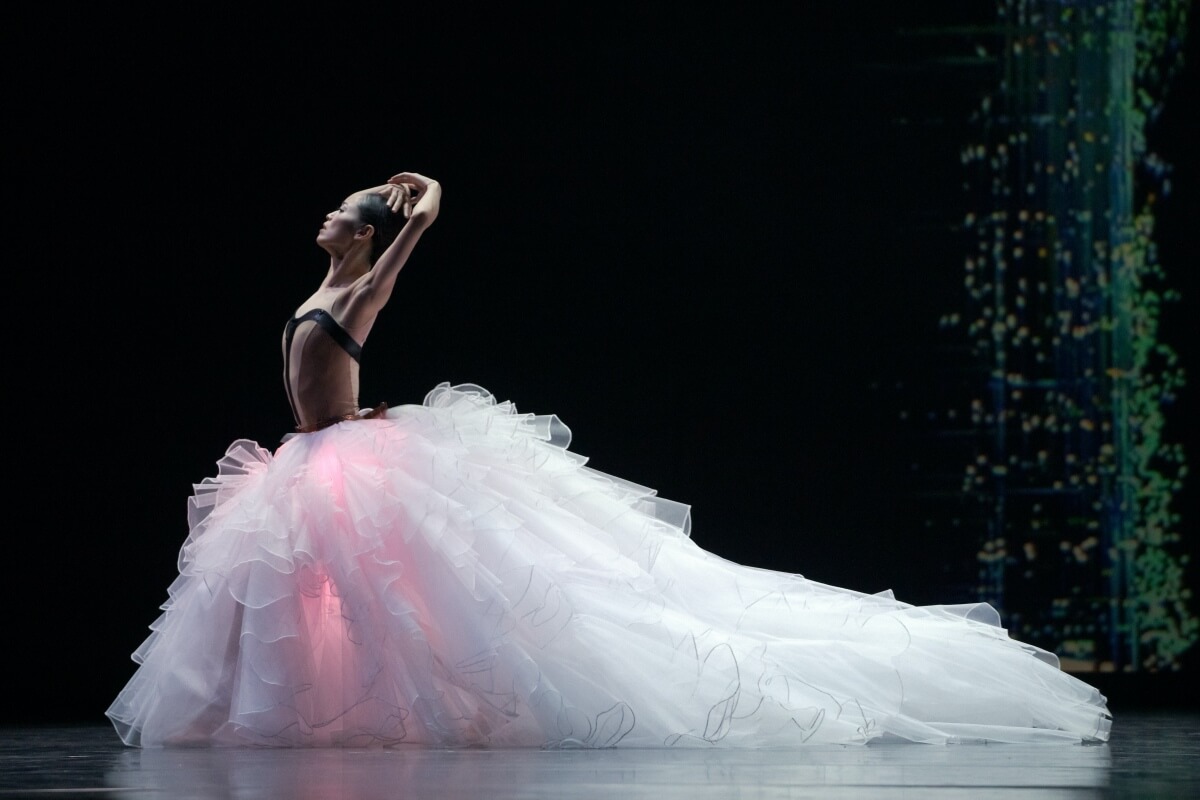
The National Ballet of Canada/Winter Triple Bill, works by Serge Lifar, Emma Portner, and William Yong, Four Seasons Centre, closes Mar. 24. Tickets here.
The National’s Winter Triple Bill featured one world premiere, one North American premiere, and one Canadian premiere, so it was fairly adventurous programming on the part of artistic director Hope Muir. To those ballet aficionados who prefer the tried and the true, I counter by saying an art form has to live and breathe and forge forward. Ballet can’t remain a museum piece.
That being said, I’m starting this review with the museum piece.

Serge Lifar’s Suite en Blanc (1943)
It is de rigueur for a ballet mixed program to have a piece that shows off a company’s classical chops, and Muir has found a complete and utter winner to add to the repertoire. Serge Lifar’s Suite en Blanc was executed flawlessly by the dancers and received rapturously by the audience. The Canadian premiere of this stunning work was an absolute sensation.
First for some background. Ukrainian-born Lifar (1905-1986) was second only to Nijinsky as the greatest dancer of their generation. Both performed with the fabled Ballets Russes. After that company’s demise, Lifar joined the Paris Opéra Ballet in 1930 as director at the astonishing young age of 24, where he not only began to choreograph works, he also built up the company to be one of the greatest in the world. He retired from the Opéra in 1956.
Lifar believed in pure ballet technique as the foundation of choreography and this is very evident in Suite en Blanc.
When the curtain opens, the entire cast is posed prettily all over the stage, and it is this beginning picture that is also the way the ballet ends. The women are dressed in white tutus which gives the ballet its name.
In between we get a series of mostly solos executed with razor-sharp precision (Isabella Kinch, Koto Ishihara, Calley Skalnik, Svetlana Lunkina, and one lone male, Spencer Hack). There is also a pas de deux (Lunkina and Harrison James), and a couple of trios (Chelsy Meiss, Tene Ward and Monica Haczkiewicz, and Brenna Flaherty, Donald Thom and Larkin Miller).
The reason I’m listing this laundry list of names is because they were all wonderful in what is a very, very difficult piece. Even the small male and female corps had to show superior technical skills. As the solos were performed, I was reminded of all the different fairy variations in Sleeping Beauty, where each one is cunningly different from the others. And so it is here where different skills were demanded in each solo.
I should note that the musical score was by the underrated French composer Edouard Lalo (1823-1892) from his ballet suite Namouna (1882), so we had luscious music which began with a rather long but spirited overture before the curtain opened.
If there was ever any question about the technical prowess of the National’s dancers, Suite en Blanc can put that to rest.
I can’t leave this review without questioning the date of this ballet’s debut. In 1943, France was in the grip of Nazi occupation, so how could this work first be performed in Zurich, Switzerland? Well, it turns out Lifar had a very good relationship with high-ranking Nazi officers who authorized the tour to neutral Switzerland.
In fact, after the war, Lifar was dismissed from the Paris Opéra in 1945 for collaboration, but the French being the practical people they are, and knowing a good thing when they see it, reappointed Lifar to the directorship in 1947.

Emma Portner’s Islands (2020)
Ottawa-born Portner is a star on the rise in the international ballet scene. This duet for two women, making its North American debut, was created for the Norwegian National Ballet and is, astonishingly, the choreographer’s first work for a ballet company.
Prior to this piece, Portner had a very eclectic career in contemporary dance, music videos, and musical theatre, not to mention a tap dance collaboration. The overwhelming success of Islands, however, has led to a string of ballet commissions, and that is where her present career seems to be taking root.
I have to begin with a cavil. Because the lighting is so dark, I’m sure that most of the audience missed that fact that the two dancers (Heather Ogden and Emma Ouellet), begin encased in the same pair of trousers. Because I had read up on the piece, I knew this fact, but, frankly, I couldn’t see it.
What I saw was a tangle of arms, legs, hands, feet, elbows, knees, wrists and heads, appearing and reappearing, and this twisting and turning of two bodies is at the heart of Islands. They are literally joined at the hip, so to speak.
The program calls the piece a sculptural duet, but that is vague. Portner has stated that she has gone against ballet tradition in Islands by having two women partner each other, and so they do.
Ogden, the taller dancer, performs the traditional role of the male, lifting and supporting, but always connected. In fact, this piece is a mind-blowing treatise of just how many ways bodies can be joined together. It’s quite astonishing to watch.
My first reaction to Islands is I have to see it again, and sooner rather than later, to begin to get a handle on the complexities of the choreography.
The score, needless to say, is a potpourri of electronica.

William Yong’s UtopiVerse (World Premiere)
I have found in my many years as a dance writer, that wide-ranging abstract themes are difficult to translate into dance.
Yong’s premise, and this is my take on his intention, is humanity’s struggle to find truth in a digital age. We yearn for utopia but have to navigate misinformation. We grapple with the conflict between perception and reality.
Is this what we see on stage?
Well, we do see a grey world. Lotus (Koto Ishihara) and Leo (Ben Rudisin) have long and languorous duets, while around them, The Daemon (Christopher Gerty) supposedly foments chaos.
There is also The Undermined (Emma Ouellet), and a few Heretics, Defects and Utopians, weaving in and out of the scene. The choreography is sophisticated and very physical, which the company performs very well.
Choreographer Yong is a man of vision, and kudos to Muir for giving a Canadian choreographer this opportunity to create a big ballet using a major number of dancers.
Yong has always used technology and design in his work, and in this aspect, the piece is gorgeous. He did his own set and costume design, aided and abetted by a talented creative team. The projections (Thomas Payette/Mirari), lighting (Noah Feaver), and content creation (Hugues Kir) are absolutely stunning.
The music score is comprised of various pieces by Benjamin Britten, a brilliant composer, but a modernist, so there is some discord there, which adds to the sombre feel of the piece.
In the final analysis, UtopiVerse, as beautiful as it is, seems monolithic and restrained. Even The Daemon fails to inject any zest to the work.
In Yong’s defense, I do know people who loved the piece, but I’m afraid I found it flat, and a bit hollow.
Are you looking to promote an event? Have a news tip? Need to know the best events happening this weekend? Send us a note.
#LUDWIGVAN
Get the daily arts news straight to your inbox.
Sign up for the Ludwig Van Toronto e-Blast! — local classical music and opera news straight to your inbox HERE.
- INTERVIEW | Actor Diego Matamoros Takes On Icon Walt Disney In Soulpepper Production Of Hnath Play - April 16, 2024
- SCRUTINY | Opera In Concert Shine A Light On Verdi’s Seldom Heard La Battaglia Di Legnano - April 9, 2024
- SCRUTINY | Lepage & Côté’s Hamlet Dazzles With Dance And Stagecraft Without Saying Anything New - April 5, 2024



